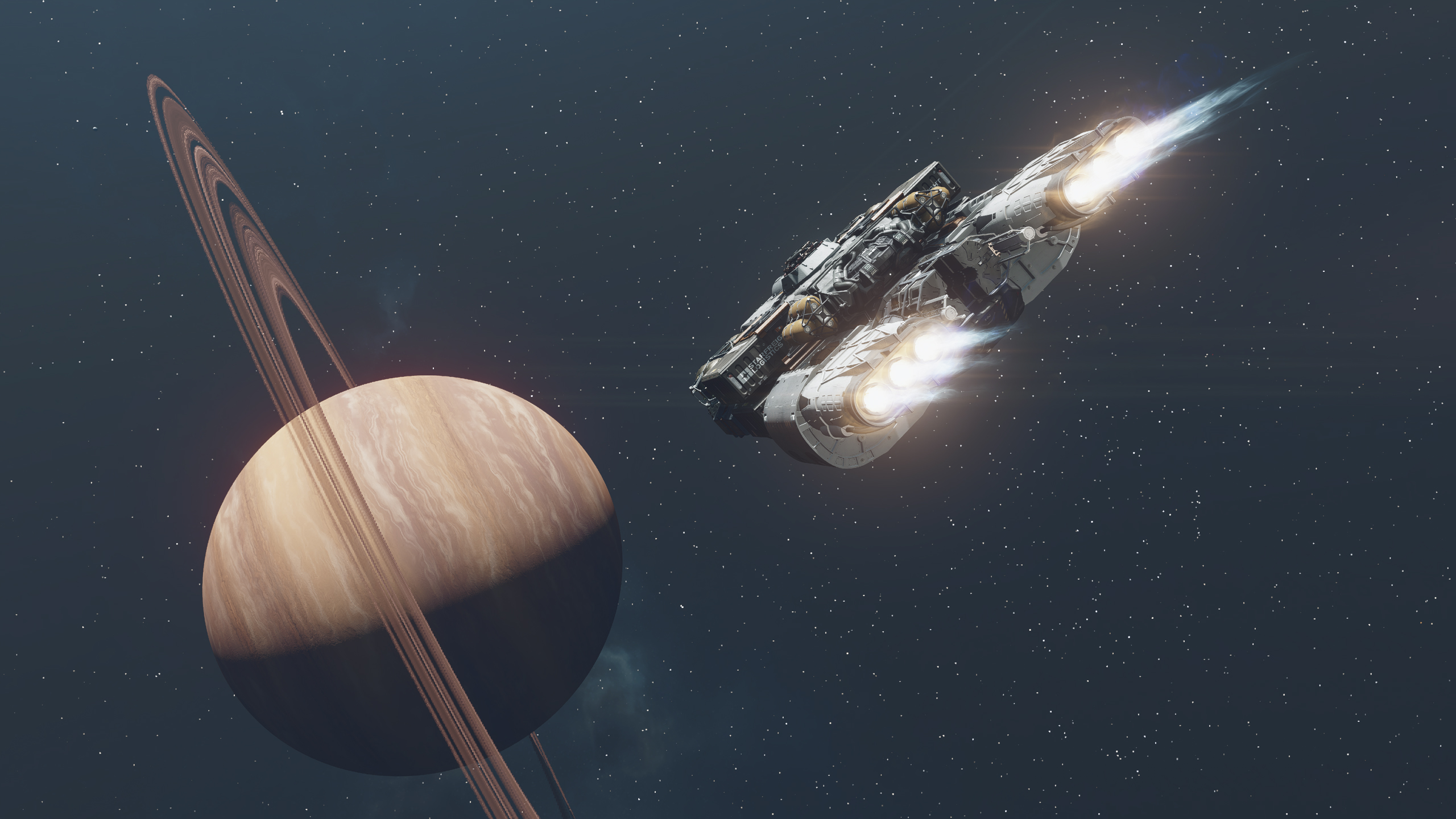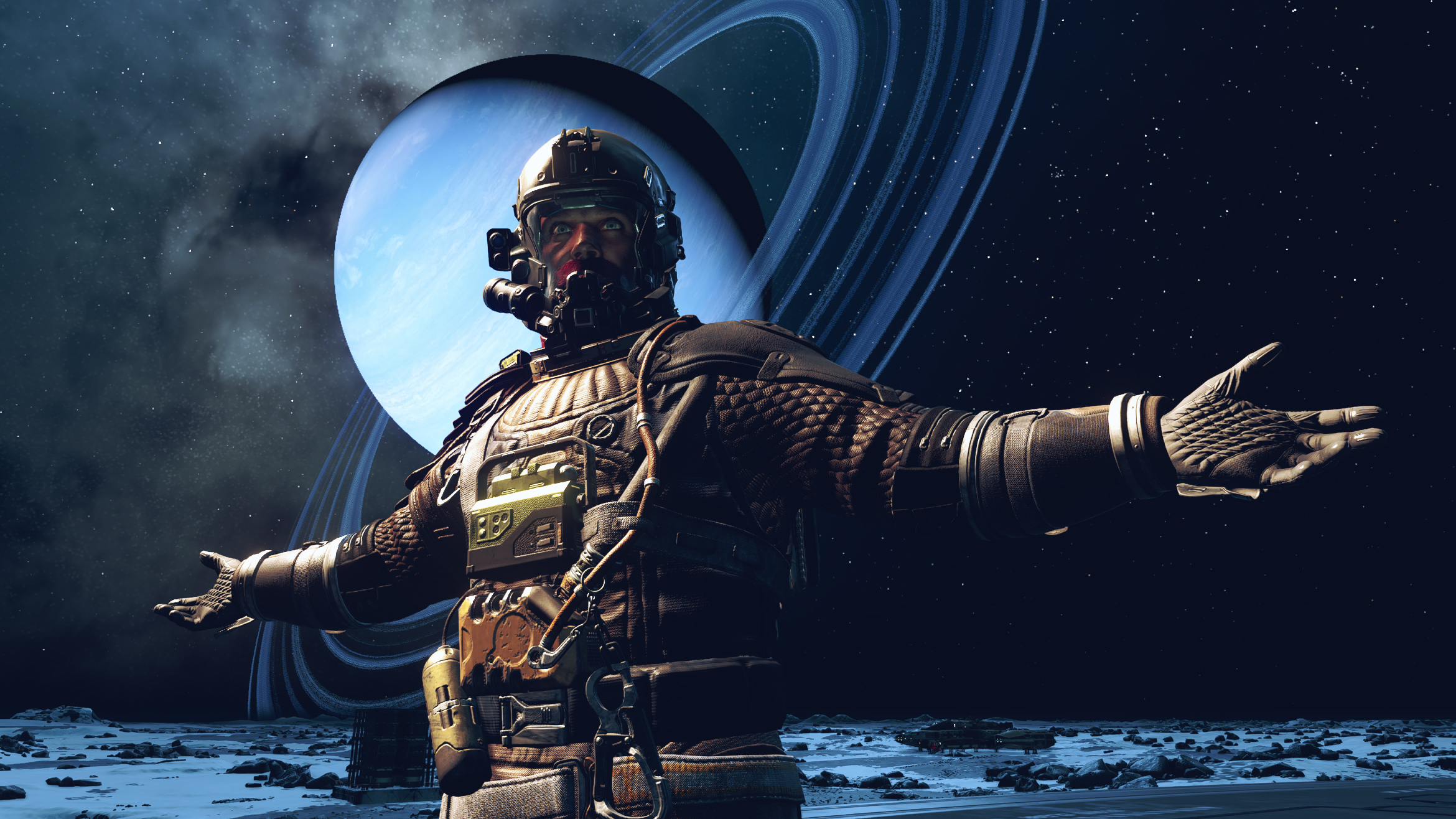Ex-Bethesda dev says Starfield could've focused on 'two dozen solar systems', but 'people love our big games … so let's go ahead and let 'em have it'
"Todd pretty much pulled the number 100 for the number of star systems out of thin air."

Starfield's big. Real big. Over 1,000 planets big. However that illusion of bigness really vanishes when the game reuses particular prefabs. You can only go through the exact same space base so many times before you start feeling like you're on the Truman Show.
As PC Gamer's Fraser Brown pointed out a while back: "there's just not much to see in Starfield outside of its busy, quest-filled hubs. Fast travel makes it feel small, but even when you do get to walk around for hours it's rare that you'll find something you haven't seen countless other times. Another dead moon. Another nickel deposit. Another pirate base."

Starfield guide: Our hub of advice
Starfield console commands: Every cheat you need
Starfield mods: Space is your sandbox
Starfield traits: The full list, with our top picks
Starfield companions: All your recruitable crew
Starfield romance options: Space dating
While I enjoyed my jaunts around Starfield in a MMO-style checklist fugue state, I have to admit—that's not exactly the 'wonders of space' feeling Bethesda tries to sell you. Interestingly enough, Ex-Bethesda dev and Skyrim's lead designer Bruce Nesmith (who was present for the start of Starfield's development but left Bethesda soon after) suggests a more condensed galaxy was on the table, if only for a moment.
"There was a lot of discussion about the scope of the game … at one point, I said 'I bet this game would be a lot better if we restricted ourselves to about two dozen solar systems'," Nesmith says during an interview with MinnMax.
However, the team saw an opportunity to leverage procedural generation to cut down on the workload of going even bigger. "Once you've done one solar system, doing a hundred is not really adding to your work all that much," he goes on to list the types of planets players might want to explore, then remarks: "Just doing our own solar system, all the variety that you have to do just to have that, you've done 90% of the work for the rest of it."
While that's true in a sense, I'm not sure that plays out in practice. Part of the fun of space is just how weird planets get. The planet HD 189733b, for example, has winds that move faster than the speed of sound. It rains molten glass there, horizontally. Gliese 436b is trailed by a cloud of hydrogen. HD 80606b's atmosphere basically explodes every 111 days. This stuff would make for great setpieces or unique encounters in a smaller game, but Starfield traded wonder for scope.
Nesmith remarks that the team decided: "people love our big games, they love that open area to explore, so let's go ahead and let 'em have it." However, even Nesmith admits that most of the game's core meat is locked to a few dozen systems. "Todd pretty much pulled the number 100 for the number of star systems out of thin air, but the more we went on, the more it was like okay, so the core activity all takes place in these two dozens in the settled systems region, and the rest of it is open space."
Keep up to date with the most important stories and the best deals, as picked by the PC Gamer team.
Nesmith theorizes that Starfield just had to make certain tradeoffs past a certain point. "When you're also trying to do 'build your own spacecraft' (which they didn't have to do), once they're doing all that quest work, and all the variety of plants and animals, you gotta make hard choices. I think some of the exploration stuff didn't come through as well as it could've."
Which is fair to an extent. Game development isn't magic—at best it's a wonky jenga tower of design decisions, riddled with necessary shortcuts. Compromises have to be made somewhere. "In every game studio on the face of this planet, they know the choices they're making … they know what the players are going to moan about. But you gotta make a hard choice."
Still, I can't help but wonder if we would've wound up with a better game if Nesmith's ideas had caught on. It makes me think about the Outer Wilds. That game has a solar system and planets that are, proportionately, small—but it captures the wonder of space exploration fantastically, including those extreme weather conditions I mentioned earlier. I am admittedly comparing an indie apple to a big-budget RPG orange here, but if the Outer Wilds can make space feel huge with only a handful of planets, Starfield could've done the same.

Harvey's history with games started when he first begged his parents for a World of Warcraft subscription aged 12, though he's since been cursed with Final Fantasy 14-brain and a huge crush on G'raha Tia. He made his start as a freelancer, writing for websites like Techradar, The Escapist, Dicebreaker, The Gamer, Into the Spine—and of course, PC Gamer. He'll sink his teeth into anything that looks interesting, though he has a soft spot for RPGs, soulslikes, roguelikes, deckbuilders, MMOs, and weird indie titles. He also plays a shelf load of TTRPGs in his offline time. Don't ask him what his favourite system is, he has too many.
- Dave JonesVideo Producer

